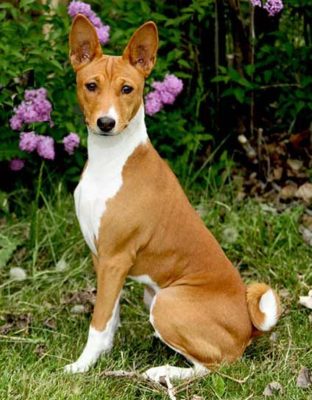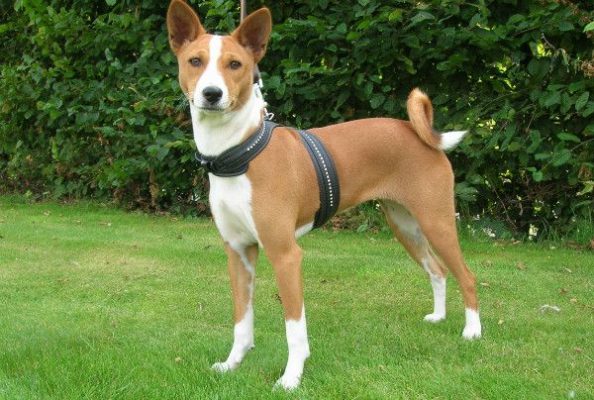Basenji
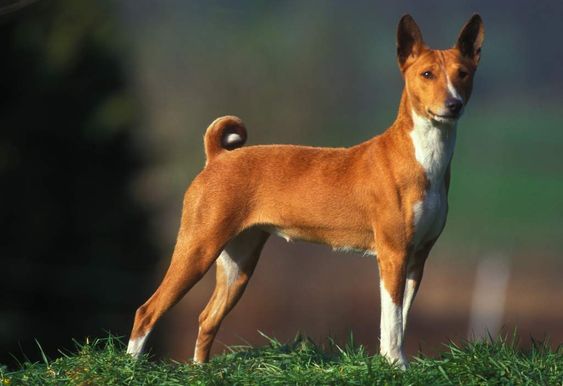
The most important feature of the breed is the absence of barking. Yes, yes, Basenjis absolutely cannot bark. It does not indicate any disease – it is genetically inherent. It also has nothing to do with vocal cords. The dog makes all sorts of normal sounds: snorting, growling, sighing, and a peculiar howling. In the past, Africans have taught the basenji not to bark so as not to interfere with hunting.
Table of Contents
Breed Information
| Another Name | African bush dog, African barkless dog, Ango angari, Congo dog, Zande dog |
| Origin | Democratic Republic of the Congo |
| Height | Males 43 cm Females 40 cm |
| Weight | 9.5-13 kg |
| Fur | Short |
| Color | Black-feather, black-feather with tan, red-feather, tiger |
| Lifespan | 13-14 years |
| FCI Classification | Spitz and primitive types |
| Group | Hunting dogs, hypoallergenic dogs, apartment dogs |
| Price | From $700 |
Breed Photos
Origin History
The history of the formation of the breed takes us far back to antiquity. There is a story that burials of such dogs were found in the tomb of Tutankhamen. There the dogs were found embalmed and wrapped in luxurious clothes. Such a burial tells us that they were definitely in reverence among the Egyptians. The dogs were brought to Egypt as a gift for the pharaohs, to whom they served as a living amulet against all evil.
Various objects of everyday life also evidence the rich history of the breed. For example, in Central Africa, frescoes, images on the rocks, and walls showed a dog similar in appearance to the Basenji. An interesting fact is that the basenji is a very independent and half-wild dog. He can easily survive in any condition. For example, nowadays, you can find basenji in the African jungle – in the wild, they gather in packs to search for food. Because of their agility and endurance, Africans began to use them to help in the hunt.
In 1895, seafarers tried to take the basenji out of the country, but their journey was unsuccessful. The animals could not endure the months-long, arduous journey – they died on arrival in England. By 1905 the breed had started to appear in some English zoos, and in 1930 the Basenji was finally brought to England. There the standard for the breed was also approved. Its popularity began in 1937 when the Basenji was presented at an exhibition in the United States. Then the breed was introduced under the name of “Congo Terrier”, which is why it still has that name to this day.
Appearance
The Basenji is a small dog with a thin backbone. Their appearance is hilarious: the head with pointed ears, the neck is slightly curved. One of the features of the Basenji is a tightly curled tail. It looks like a donut, which can not help but amuse. Flat skull of medium length. In a restless state on the head, thin wrinkles are formed. The eyes are obliquely set, not large, almond-shaped. Short loincloth. Small compact paws. The coat is tight to the body, short and thick. In all colors, must have white paws, chest, and the tip of the tail.
Character
The most important feature of the breed is the absence of barking. Yes, yes, Basenjis absolutely cannot bark. It does not indicate any disease – it is genetically inherent. It also has nothing to do with vocal cords. The dog makes all sorts of normal sounds: snorting, growling, sighing, and a peculiar howling. In the past, Africans have taught the basenji not to bark so as not to interfere with hunting.
It is a unique dog, brave, fearless, and with an interesting character. He is very inquisitive, active, extremely brightly able to show feelings and emotions. With other animals (especially cats), he is friendly. It would help if you only watched the reaction to hamsters and other small animals so that the Basenji does not awaken hunting instinct and disaster. He gets on well with children and is very attached to family members. Suitable for both in an apartment and at home. Please also note that the basenji can run fast and take off, so you will have to remove all fragile vases. Otherwise, your new pet will make a real mess.
Care
The nicest feature of the Basenji is that the breed is immaculate. They even often take care of themselves by washing themselves like cats. Experienced owners of different breeds say that this is one of the cleanest species. Moreover, they do not have a characteristic dog smell. Besides, Basenjis are considered hypoallergenic. In general, the complexities of care will not be at all. Comb the hair several times every two weeks. Bathe as needed, but not too often, so as not to harm the skin’s condition. Check ears and eyes periodically. Clip nails as they grow. Long walks are a must since Basenjis are very energetic dogs. He needs somewhere to spend that energy, or he gets naughty.
Training
Problems with this breed can only arise in training. Basenji are very independent and determined. It is thanks to these qualities; they have survived under challenging situations in the African jungle. Nevertheless, the Basenji is brilliant; you need a unique approach to them. Show him that you are the boss, and he must be listened to. As soon as the dog understands it, he will begin to fulfill all the orders and commands. The basenji has no problems with memory – the dog will instantly remember everything required of him. A little energy to match the active Basenji, patience, and strength, and then everything will work out.
Common Diseases
Thanks to their stamina and strong immune system, Basenjis are in fairly good health. But there are weaknesses of the breed, here are typical diseases for them:
- Fanconi syndrome (one of the genetic illnesses manifested by impaired kidney function);
- dermatitis;
- infertility;
- bladder infections;
- hypothyroidism;
- hip dysplasia;
- eye diseases (progressive retinal atrophy, residual pupil membrane, coloboma);
- hemolytic anemia.
Nutrition
Basenjis are very cunning dogs. They like to suck up to the owner, look into the plate and ask for an extra piece of “anything, but only from your plate“. It is important not to give in to these manipulations so as not to damage their health. The diet should be balanced and include everything he needs: porridge, fruits, and vegetables. Be sure to give meat and by-products. Of dry food is better-suited food for medium-sized breeds with an active lifestyle. It will be full of vitamins, proteins, carbohydrates, and minerals necessary for normal dog formation and growth.
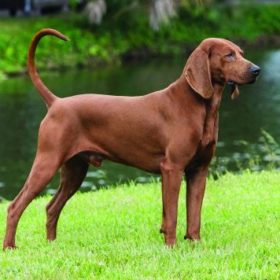 Redbone Coonhound
Redbone Coonhound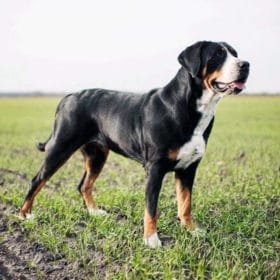 Greater Swiss Mountain Dog
Greater Swiss Mountain Dog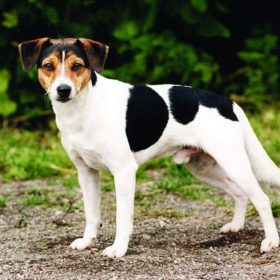 Danish-Swedish Farmdog
Danish-Swedish Farmdog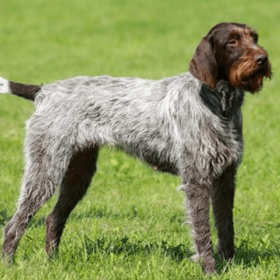 Český Fousek
Český Fousek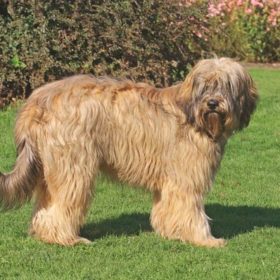 Catalan Sheepdog
Catalan Sheepdog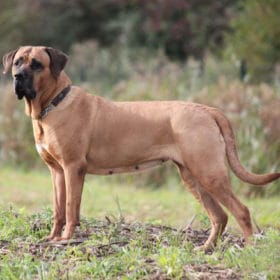 Tosa
Tosa
